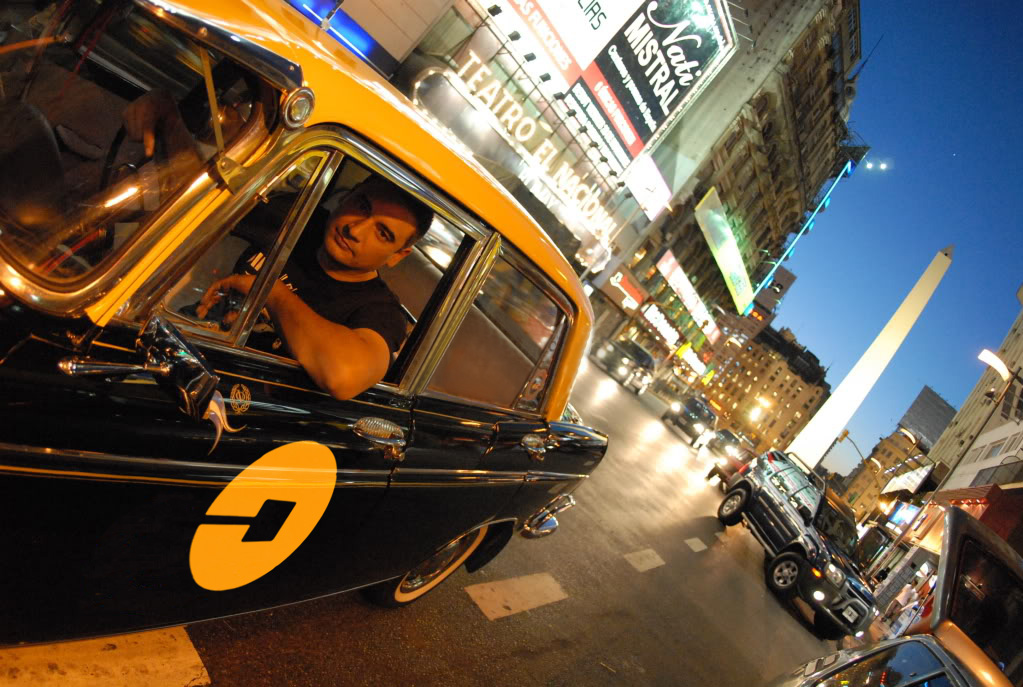Giroscope’s 10 Reasons: Why Uber should become the main public transport system
23 June 2016By Gabriel Celemin
1. Relief for urban infrastructure
Access roads and traffic in major cities around the world are collapsing (or about to collapse) because of the huge number of cars added to the fleet every year. To service and host these vehicles, millions of acres are required for parking (there are over 19 million parking spaces in Los Angeles County [1]) which are insufficient during working hours and then remain empty at night and during the weekend.
2. Pollution reduction
Vehicular traffic is responsible for a significant part of the pollution in cities. Internal combustion engines produce various types of polluting gases: nitrogen oxides (NOx), carbon monoxide (CO), carbon dioxide, volatile organic compounds and macroparticles [2]. Vehicular air pollution has harmful effects on human health.
Epidemiological studies comparing urban areas with high level of pollution and rural areas with low pollution levels show that the differential in cases of respiratory diseases is related to the air pollution [3].
3. Energy savings
Diesel, gasoline and natural gas used to fuel cars, which may carry only one or two people at a time during commute hours, could be used for other purposes, i.e. for electricity generation or to feed the natural gas system [4].
It is estimated that world energy consumption by cars is about 500 billion gallons per year [1].
4. Improve public transport system (improving access to faraway places, with better coverage at night)
The “on demand” service operated by independent owners (regulated by a governmental authority) would enhance the public transportation system and improve access to faraway places and during night hours, when traditional train, bus and subway networks do not operate or do so on a reduced schedule.
5. Job generation and a new source of tax revenue
Services like Uber would have the dual benefit of creating new jobs for people and a new source of revenue for the treasury, if the drivers are added as taxpayers to the system.
6. Accident reduction
The two main reasons people choose Uber are: they consider the service safe and they want to avoid driving after consuming alcohol [1]. If we add up the increasing number of accidents caused by the use of cell phones while driving, the potential for reducing traffic fatalities could be huge. Even though cell phone use while driving is banned in most states, more than half of all traffic accidents in the United States involve cell phone use [5].
7. Cost reduction (owning vs. using)
Although in the United States cars are only used 4% of any given day, the average cars per household in this country is 2.2 cars. Moreover, 20% of households have 3 or more cars [1].
For a single person, the cost of owning a car is much higher than the cost of using a car service. Fixed costs include taxes, maintenance (periodic reviews, spare parts), financing (credit), fuel, insurance and depreciation (cars lose 50% of their value in the first 3 years [6]). These inherent costs of car ownership don’t include other expenses such as tolls, parking fees, and traffic tickets.
8. Increased safety
The risks of theft, kidnappings and other factors related to owning a car (especially a high-end brand) are reduced substantially.
9. Change in habits in the younger generations
Millennials don’t value freedom or pride themselves on driving their own car as much as previous generations did. Previous generations couldn’t wait a day past their 16th birthday to get their driver’s license [7].
In the U.S. the percentage of people (16-44 years) with licenses has dropped to 77% from 92% in 1982. In addition, young people are more likely to share a ride and are not willing go through the headaches of car ownership [1].
10. Harnessing your commute time
In the U.S. people spend 4.3 hours a week commuting to their job. This is equivalent to 13% of the working time [1].
This time could be spent more enjoyably or productively. According to statistics, people spend 21 hours a month on Facebook and Spotify respectively, and 13 hours on Instagram and Snapchat [1].
Did you like this article?
Tell us what you think! or share on Facebook, Twitter and email with the icons below.
Sources:
- [1] Internet Trends 2016, KPCB
- [2] Contaminación producida por el tráfico, Wikipedia
- [3] Contaminación por automóviles, Conicet
- [4] Combustibles fósiles usados para la generación de electricidad, CEC
- [5] The 25 Scariest Texting and Driving Accident Statistics, Icebike.org
- [6] Depreciation Infographic: How Fast Does My New Car Lose Value?, Edmunds
- [7] The Disrupters, The Economist

